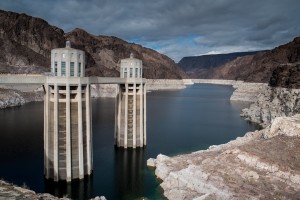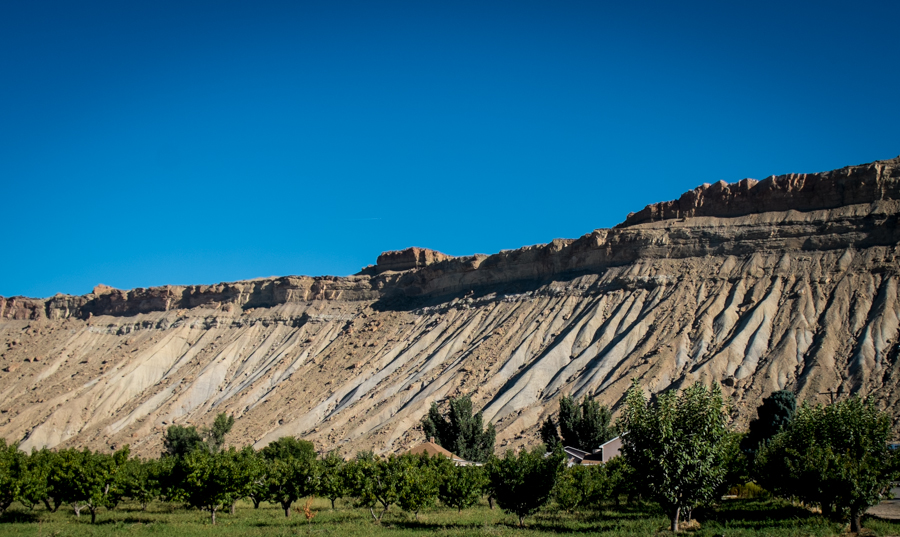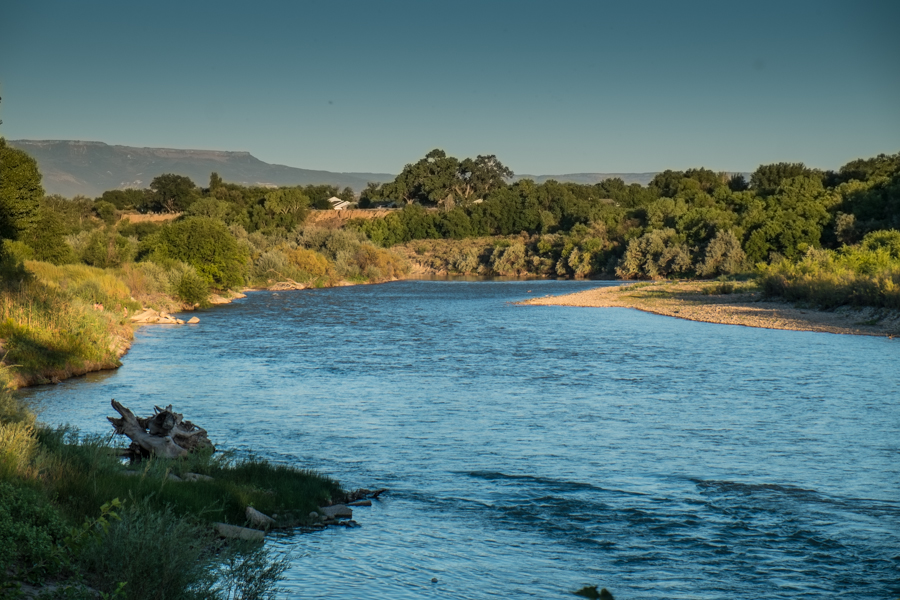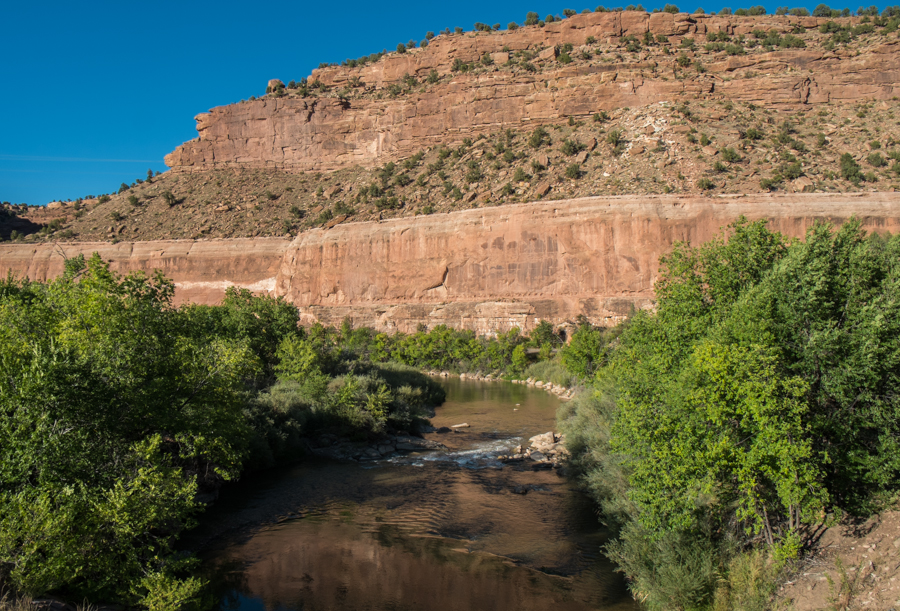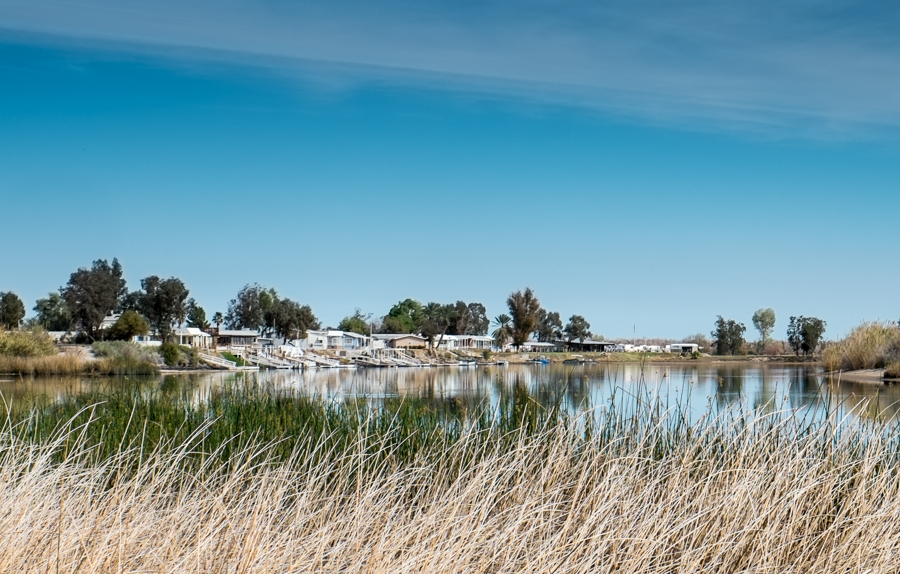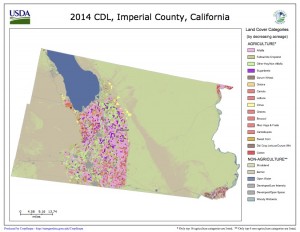So excited for my friend Cynthia Barnett, whose book Rain: A Natural and Cultural History is a nonfiction finalist for the National Book Award (pdf). It’s a great book. You should read it.
Las Vegas to help out Southern California with 150,000 acre feet of Colorado River water
The Southern Nevada Water Authority’s board will take up a proposal this Thursday to ship 150,000 acre feet of Las Vegas’s unused Colorado River water to Southern California to help out during California’s epic drought.
The water will help the Metropolitan Water District of Southern California make up for shortfalls in its supplies from Northern California, where drought has dramatically reduced the amount of water available for shipment through California’s State Water Project. Met is basically desperate, and Las Vegas has been so successful at water conservation that it is only using 75 percent of its Colorado River allocation these days.
If I was trying to explain this in the simplest possible terms, I would put it this way: Las Vegas is selling L.A. and San Diego 150,000 acre feet of water at a price tag of $295.83 cents per acre foot. But language here matters, so let’s be careful about the legal terminology. It would be wrong to call this a “sale” of water. More like a loan, or a banking agreement? The agreement between SNWA and MWD calls for Met to pay Vegas $44.375 million, and Vegas in turn will “store” 150,000 acre feet of water in Met’s system, that might be paid back (water and money) some day maybe sorta. But “store” really means Met can just use it to meet drought needs now.
Storage and Interstate Release Agreement
This is made possible by a “Storage and Interstate Release Agreement“, which provides the states of the Lower Colorado River Basin the flexibility to do water deals across state lines without calling them water transfers. Met and Southern Nevada have had such an agreement in place since 2004, and Southern Nevada already has 205,225 acre feet of water “stored” in Met’s system. (Nevada has another 601,041 acre feet stored in Arizona.)
Matt Jenkins in his High Country News profile of Pat Mulroy earlier this year had a great bit of business explaining the linguistic care with which these deals must be handled:
[T]ransfers, even within the Lower Basin, are … politically charged. “Don’t ever call it a transfer,” (Mulroy) scolded during a 2008 interview. “It’s a banking agreement. That thing will disappear on us tomorrow if we call it a transfer.”
So this is definitely not a transfer. If and when Las Vegas needs the water back, it’ll pay Met “a proportional amount of its costs” and grab the water from Lake Mead via an accounting swap. (It’s not like it makes sense to literally pump the water back uphill from Diamond Valley Lake to Vegas.) So maybe this is more like a “loan” of water?
Whatever we call it, it’s an important example of the sort of adaptive capacity Colorado River water managers have been developing in recent years to overcome the legal strictures that tie up water management flexibility under the cumbersome Law of the River.
A Colorado River water use I can get behind: Palisade peaches
I assume this bluff above Palisade, Colorado, explains the name:
Those are peach trees in the foreground, irrigated by water from the Orchard Mesa Irrigation District, which first turned water in 1904 onto what a friend calls “as fertile a swath of God’s green earth as there is in the West.” The district’s water now comes from the Cameo diversion dam a few miles upstream, and this is one of those lovely plots of Colorado River Basin ag land that has the river itself flow right through the middle of it. Famous for peaches:
One of those boxes is now safely nestled in the back of our car for the drive back to Albuquerque.
Grand Junction: A view from higher up in the watershed
The question of what is included in the “Colorado River Basin” is in part a legal one. The seven-state Colorado River Compact of 1922 defined a weird legal geography:
[T]he term “Colorado River Basin” means all of the drainage area of the Colorado River System and all other territory within the United States of America to which the waters of the Colorado River System shall be beneficially applied.
The creates the weird reality that for my entire life outside of five-plus years away at college, I have lived in the legal Colorado River Basin without ever living in the actual watershed of the great river – in suburban Southern California (where we got Colorado River water via the Metropolitan Water District’s Colorado River Aqueduct) and Albuquerque (where we get water via the Bureau of Reclamation’s San Juan-Chama Project).
I spent a really productive day today in Grand Junction, in western Colorado, at the Colorado River District’s annual Water Seminar. This is a working landscape, and there was much useful talk about how to help keep it so in a time of decreasing river flows and pressure from water users elsewhere. (Huge thanks to Eric Kuhn and Jim Pokrandt and the other folks at the River District for inviting me.)
Folks here are looking downstream nervously at the perilous state of Lake Mead. The title of the day’s meeting was “Will What’s Happening in California Stay in California?” Pat Mulroy, late of Brookings Institution, reiterated an argument that she’s been making for some time (an argument with which I agree) that we’ve created one giant interconnected artificial watershed that links the Sacramento Delta in California, via California’s vast plumbing, with the Colorado River system. When Southern California gets less water from the Sacramento System, it has to turn to the Colorado to try to pick up the slack. The resulting water management pressures link that, then, with pressures on water use here in places like Grand Junction.
But here, where the Colorado River skirts the southern edge of town, there’s no question that you’re really in the Colorado River Basin. No need for a legal arm-waving to make that clear:
A pleasant (if long) detour
Cohen sees signs for Salton Sea optimism
Mike Cohen, writing for National Geographic’s “Water Currents”, explains what’s at stake in the current discussions over what to do to mitigate reduced flows to the Salton Sea as ag water conservation efforts in Imperial Valley grow:
The shrinking Salton Sea will expose tens of thousands of acres of lakebed. The dry lakebed could emit as much as a hundred of tons of dust each day, posing a severe threat to public health. It would also remove one of the last remaining havens for birds and wildlife along this Sonoran Desert stretch of the Pacific Flyway. Some 90 percent of the original wetlands of the Colorado River Delta and central California have dried up or been converted into farm fields, making the Salton Sea a critical link on the Pacific Flyway.
But he’s optimistic:
Fortunately, even allowing for the IID-San Diego County water transfer, a huge volume of water – more than 700,000 acre-feet per year – will continue to flow into the lake. Properly managed, this water could create and sustain tens of thousands of acres of productive habitat, minimize dust, and create recreational and economic opportunities….
Now, after more than 50 years of studies and meetings, the future of the Salton Sea may offer some glimmers of hope.
Worth a click for the full explanation of recent promising developments.
To deal with water scarcity, you need the right tools
For a century, water management in the West was an engineering profession. Now it must be an economics profession.
Couldn’t’ve had boat docks here before they built Hoover Dam
I don’t remember exactly where this is. It was a short walk down an arroyo from US95, the two-lane that runs north from Blythe along the Colorado River to Parker. The farming here is all on the Arizona side of the river. This was all underwater during the river’s pre-dam spring high flows, big desert valley at low flows. Couldn’t have had boat docks, or alfalfa.
Water markets: “a servant of sound governance, not the master”
Some useful insights from Dustin Garrick on water management lessons the western United States can learn from Australia:
Australia’s experience shows that water markets have an important role to play. But they are a servant of sound governance, not the master. Above all, markets are certainly not free, nor are they self-sustaining. Like a marriage, they take steady work to adjust as values change.
California names someone to solve the Salton Sea mess
Just when I think I’ve got the Colorado River Basin’s problems all sorted out, I keep bumping up against this crazy Salton Sea thing.
This USDA Cropscape landcover map really nicely illustrates the geography of the thing. The brightly colored bits are the irrigated agriculture of the Imperial Irrigation District. Agricultural runoff flows to the northwest, into the Salton Sea, which occupies a sink, below sea level.
When inflow equals evaporation, the level of the sea is stable. If we succeed at conserving water, as we all agree needs to happen, the sea shrinks, exposing a dry lakebed and leading to all manner of bad things (air pollution, asthma) that disproportionately impact the relatively low income people who live around the sea, and also the affluent folks out in the palmy golf coursey hip music festivally communities of Coachella and Palm Springs to the west.
So, to sum up, solving the region’s water problems could wreak environmental havoc.
In 2003, the state of California as part of the tangle known as the Quantification Settlement Agreement promised cross my heart and hope to die to deal with the environmental piece if only the farm water managers would go ahead and do the water conservation. The state has thus far done pretty much doodley squat, which understandably makes the folks in Imperial, who have been keeping up their end of the conservation deal, unhappy.
This is a too-long introduction to today’s news, from Sammy Roth at the Desert Sun, that the state has appointed a Salton Sea czar with some Imperial roots and Salton Sea qualifications to try to right the governance ship:
Gov. Jerry Brown said Wednesday he has named Bruce Wilcox assistant secretary for Salton Sea policy, a newly created position within California’s Natural Resources Agency. Wilcox currently oversees Salton Sea-related projects as the Imperial Irrigation District’s environmental manager.
Wilcox will coordinate the many local, state and federal agencies working to limit the public health and ecological disasters brewing in California’s largest lake. Similar appointments have helped the state address other complex, stubborn problems, said Keali’i Bright, deputy secretary for legislation at the Natural Resources Agency.

